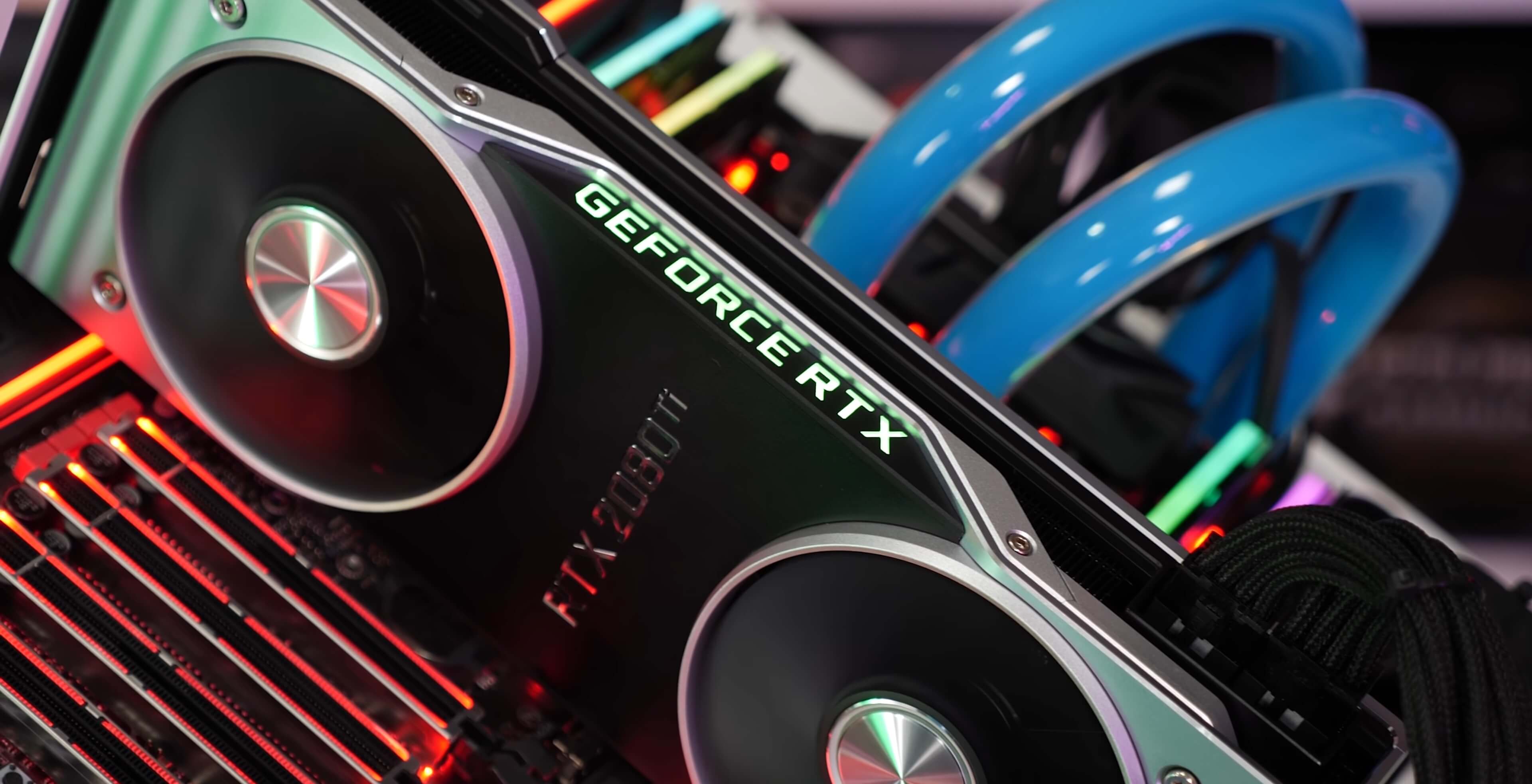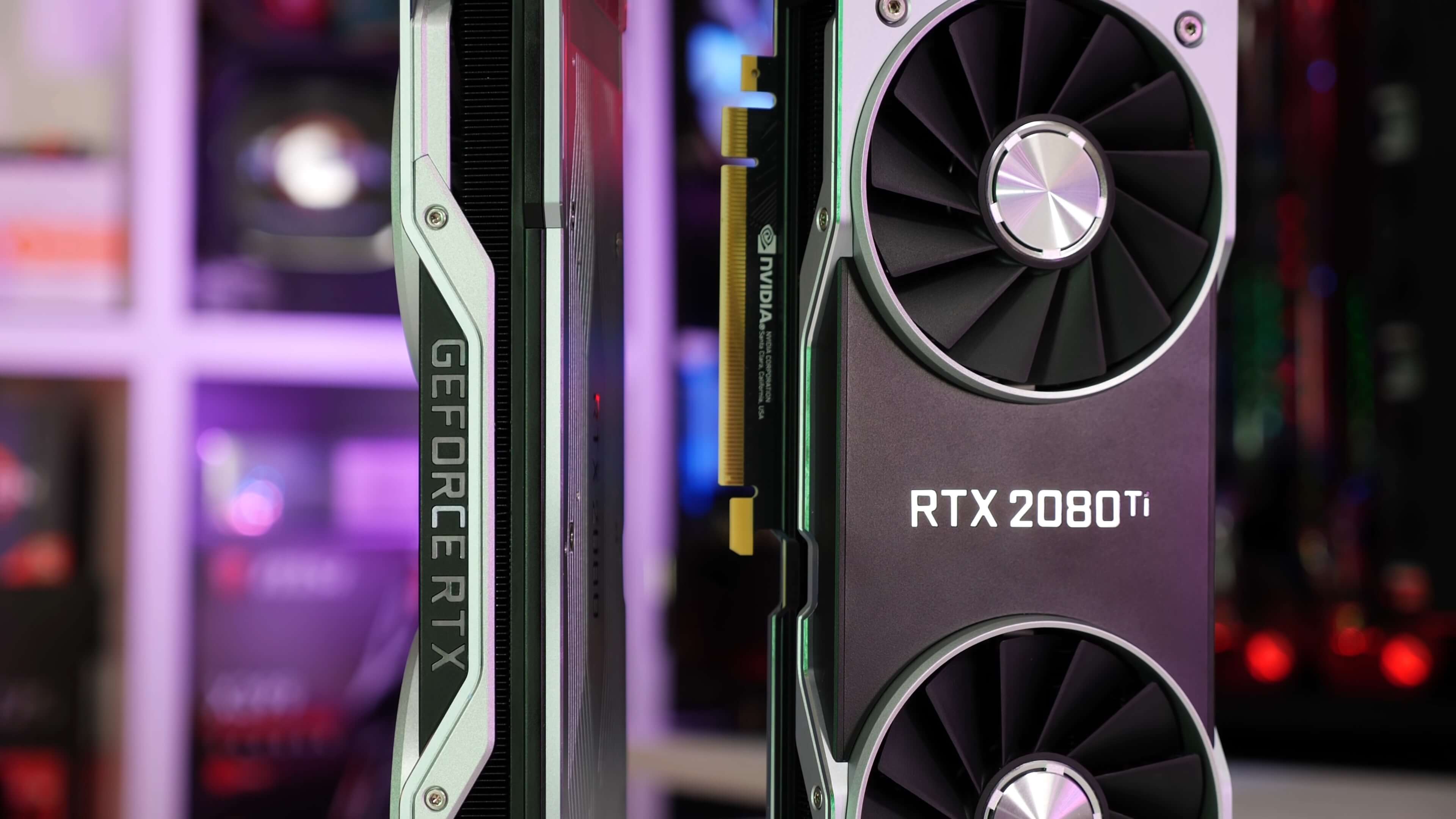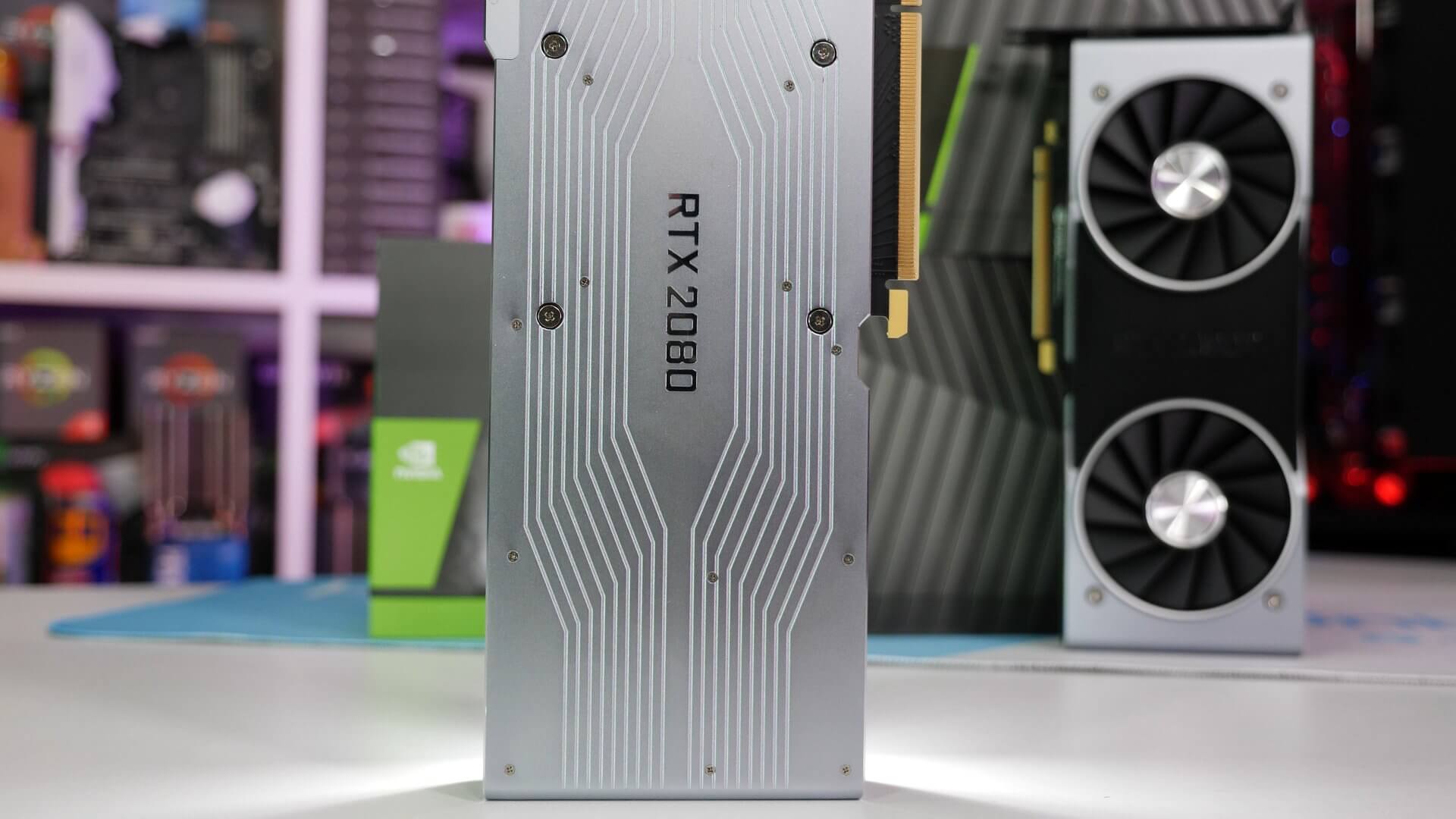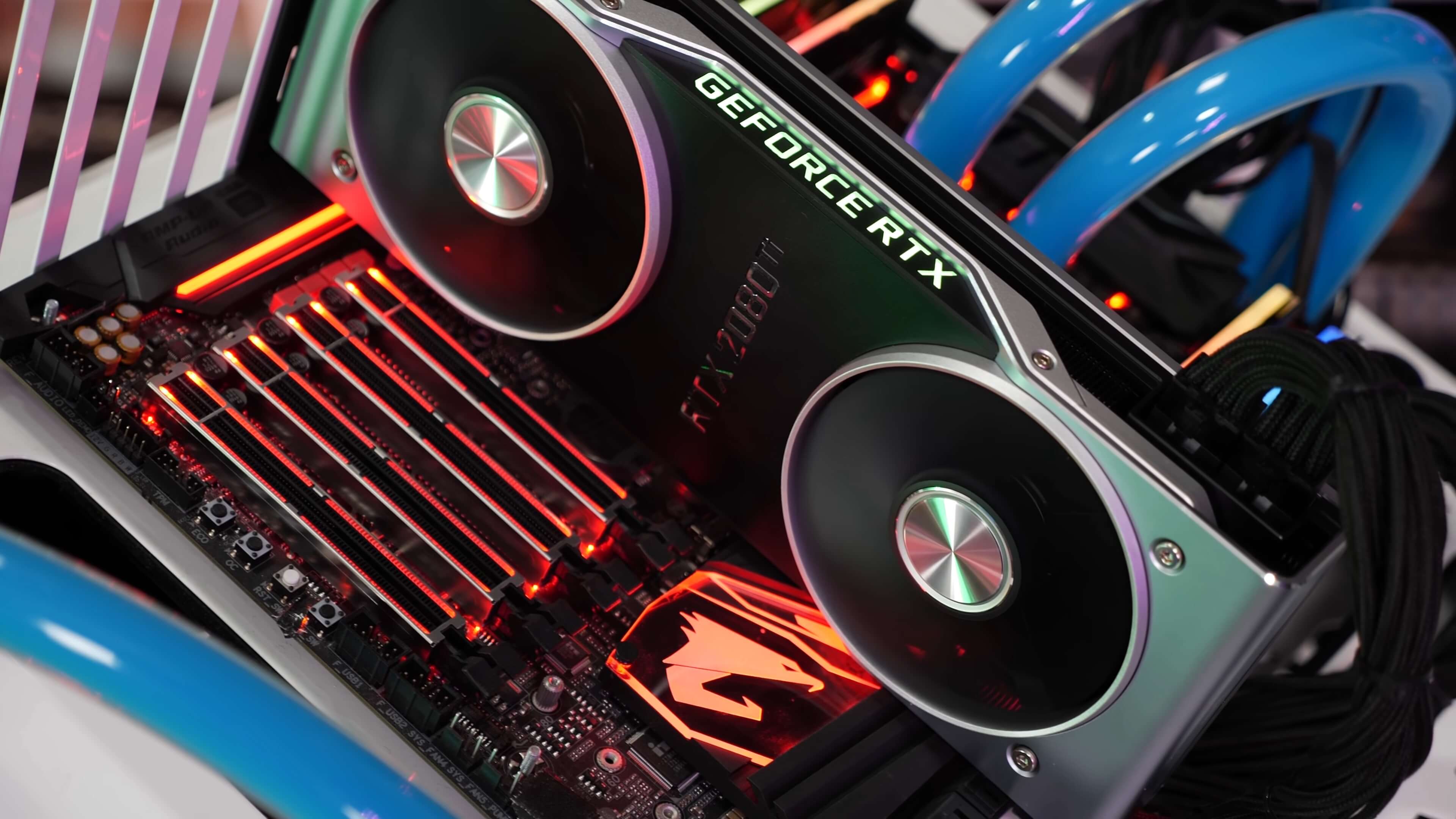Performance Summary, Cost Per Frame, Wait and See?
We've now looked at performance in a dozen games and if the choice of titles seems a bit odd or random, please know that it's not and our day-2 larger benchmark feature with 35 games total (now online) will make it clear as to why I chose the titles that I did.
We often found the 2080 Ti to be CPU bound at 1440p, so unsurprisingly it's just 22% faster than the 1080 Ti on average here. That said we see examples of it providing gains in excess of 30%, with Rainbow Six Siege and Wolfenstein II being the standouts.
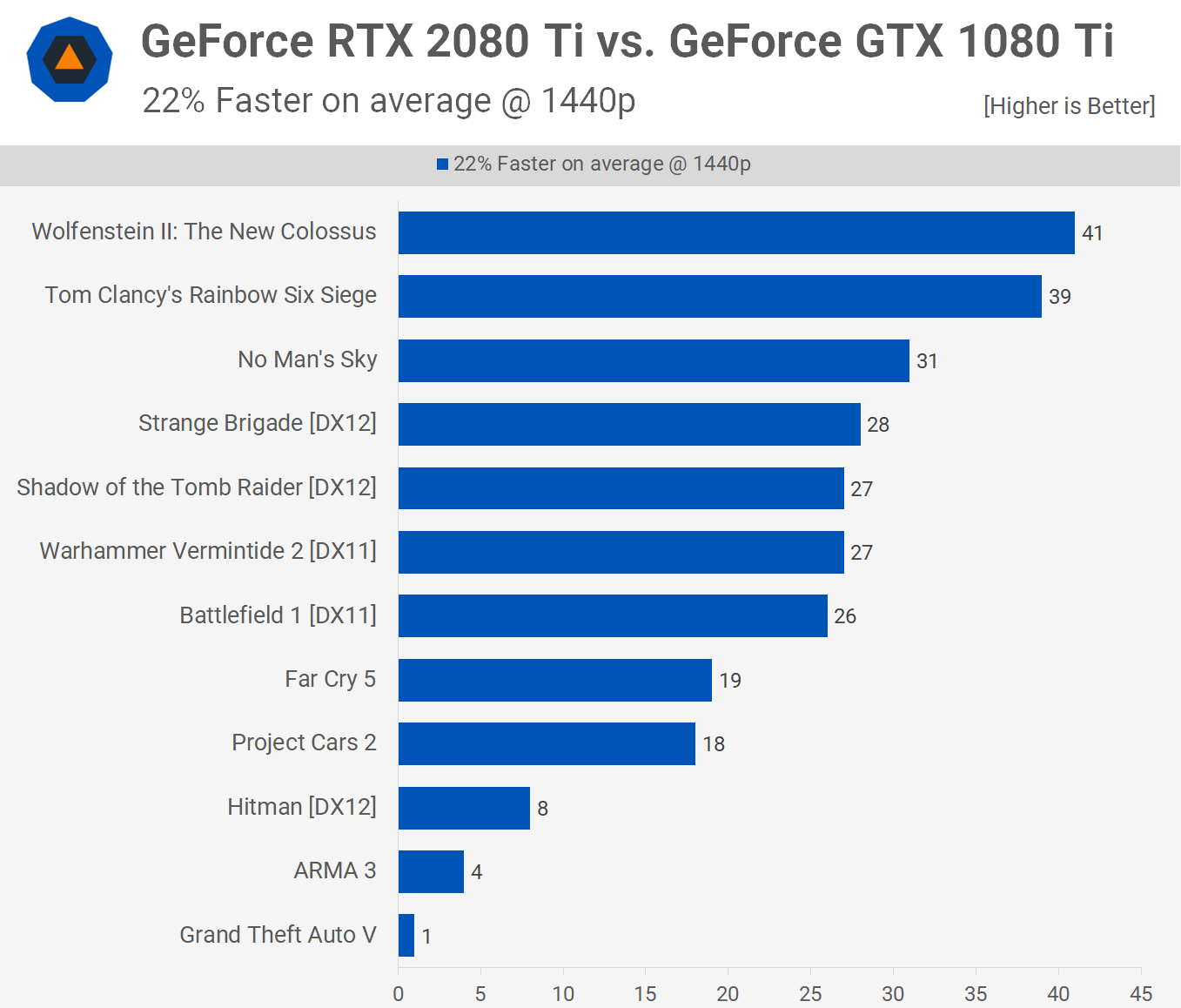
The same batch of tests run at 4K extends the lead out to 31%, so on average the 2080 Ti is 31% faster than the 1080 Ti, according to our results. The most notable change here is Grand Theft Auto V, previously the 2080 Ti was just 1% faster as the system was heavily limiting performance, but now at 4K it's able to provide 37% more frames. Again Wolfenstein II is the standout result for the 2080 Ti but it also does well in Rainbow Six Siege and No Man's Sky as well.

Comparing the 2080 Ti and 2080 at 1440p provides similar results to what we saw when comparing the 2080 Ti and 1080 Ti, here the 2080 Ti beats the standard version by a 21% margin on average.
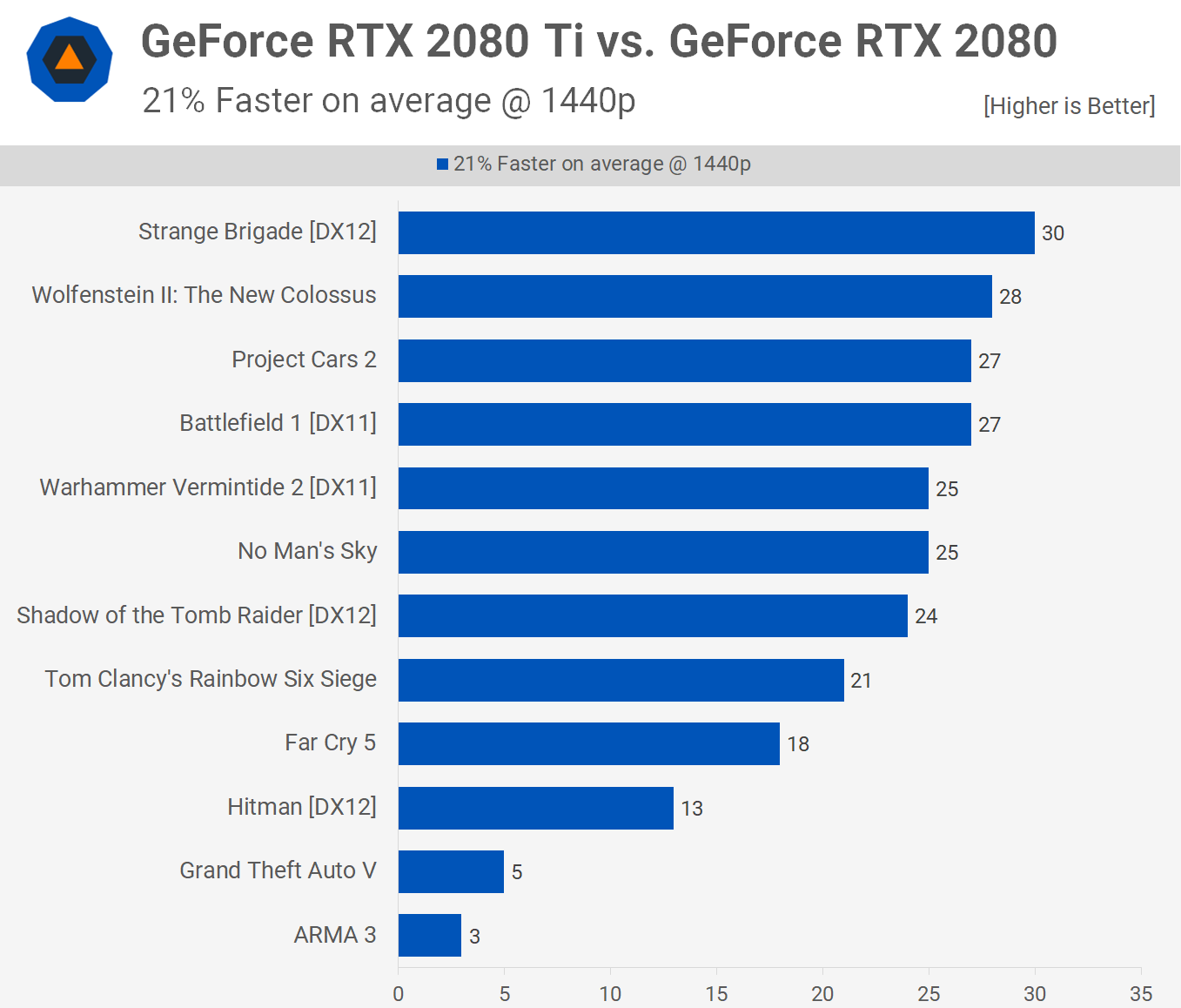
That margin is extended to 30% at 4K and again this is because the 2080 Ti isn't limited by other components in the system. The 2080 Ti packs 48% more CUDA cores than the 2080, so a 30% performance uplift on average is about what we'd expect to see.
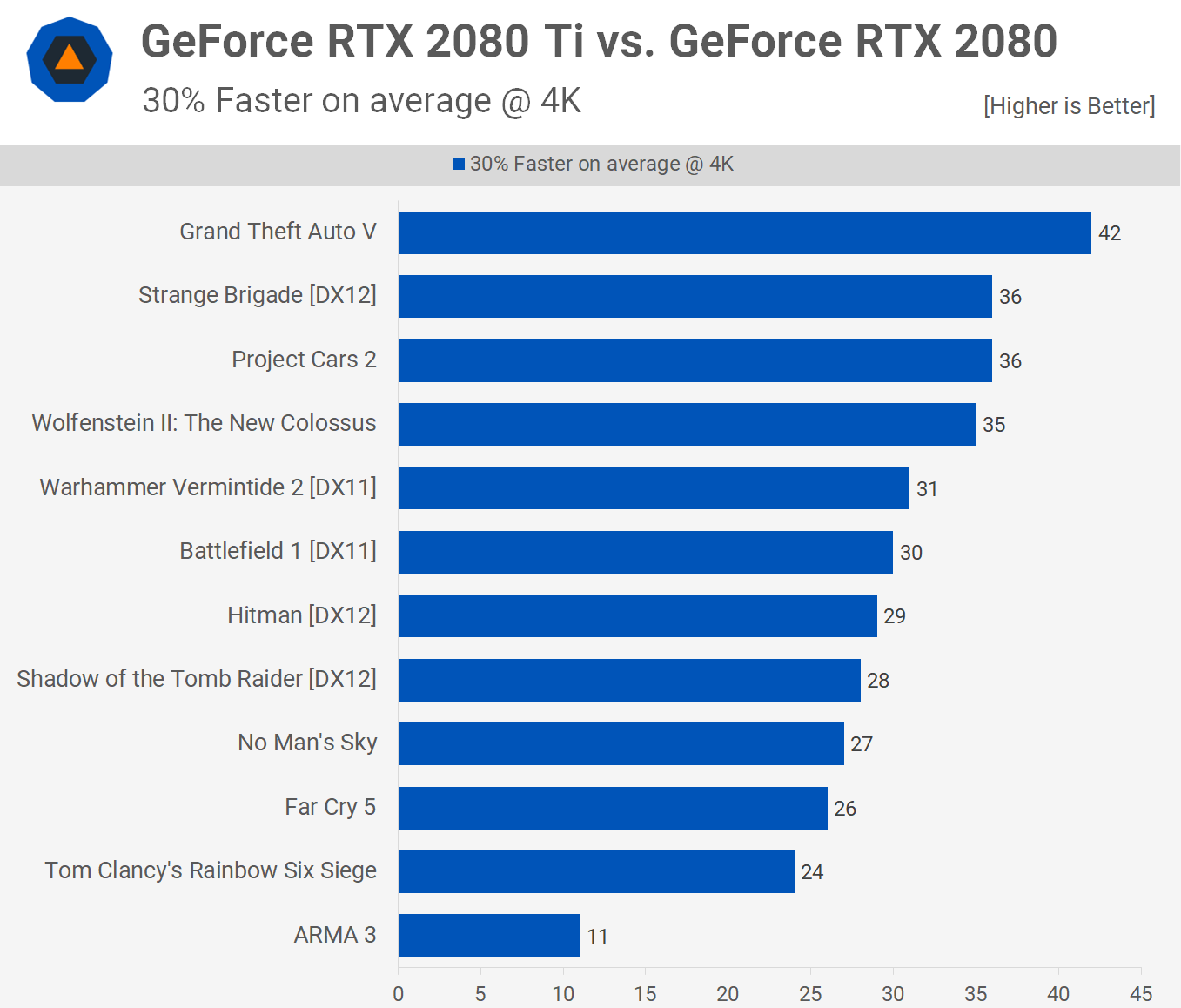
Now looking at the RTX 2080 we see when compared to the 1080 Ti it was just 1% faster on average at 1440p. It's only notable wins came in Rainbow Six Siege and Wolfenstein II, while it was slower by 5% or more in Hitman and Project Cars 2.

The margin remains the same at 4K and the performance trends are also much the same, so overall the 2080 is offering 1080 Ti like performance.

When compared to the GTX 1080 the new 2080 was 29% faster on average at 1440p which isn't bad and slightly better than the 23% gain the 2080 Ti provided over the 1080 Ti.
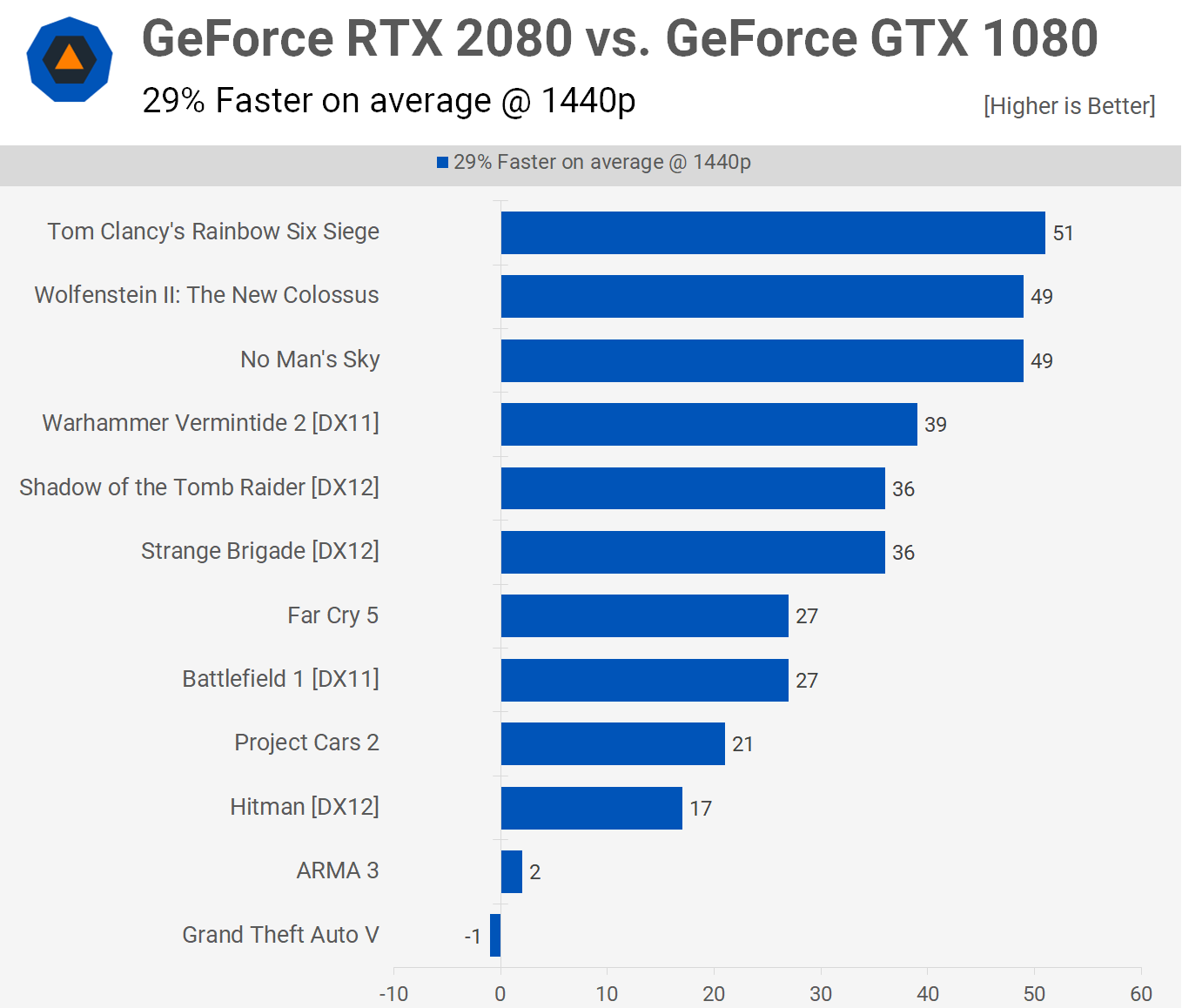
Then finally at 4K the 2080 offered 34% more performance which is certainly a very respectable gain, but it really comes down to how they stack up in terms of cost per frame, so let's look at that now.

First let's look strictly at the AIB MSRP, that's the suggested retail price for Nvidia's board partners like MSI, Gigabyte, Asus and so on. So added to the model names on the graphs axis are the MSRP's, $1,000 for the RTX 2080 Ti for example.
This means the 2080 Ti comes at a cost of $10.75 per frame based on our performance data just seen. That figure alone means nothing but when compared to the 1080 Ti it means you're paying a 9% price premium for the new flagship GPU, so although the MSRP has increased by 43% given the additional performance you're only paying 9% more. But of course that's not really how we should look at this given Pascal is a 2 year old architecture, but I'll discuss this more later.
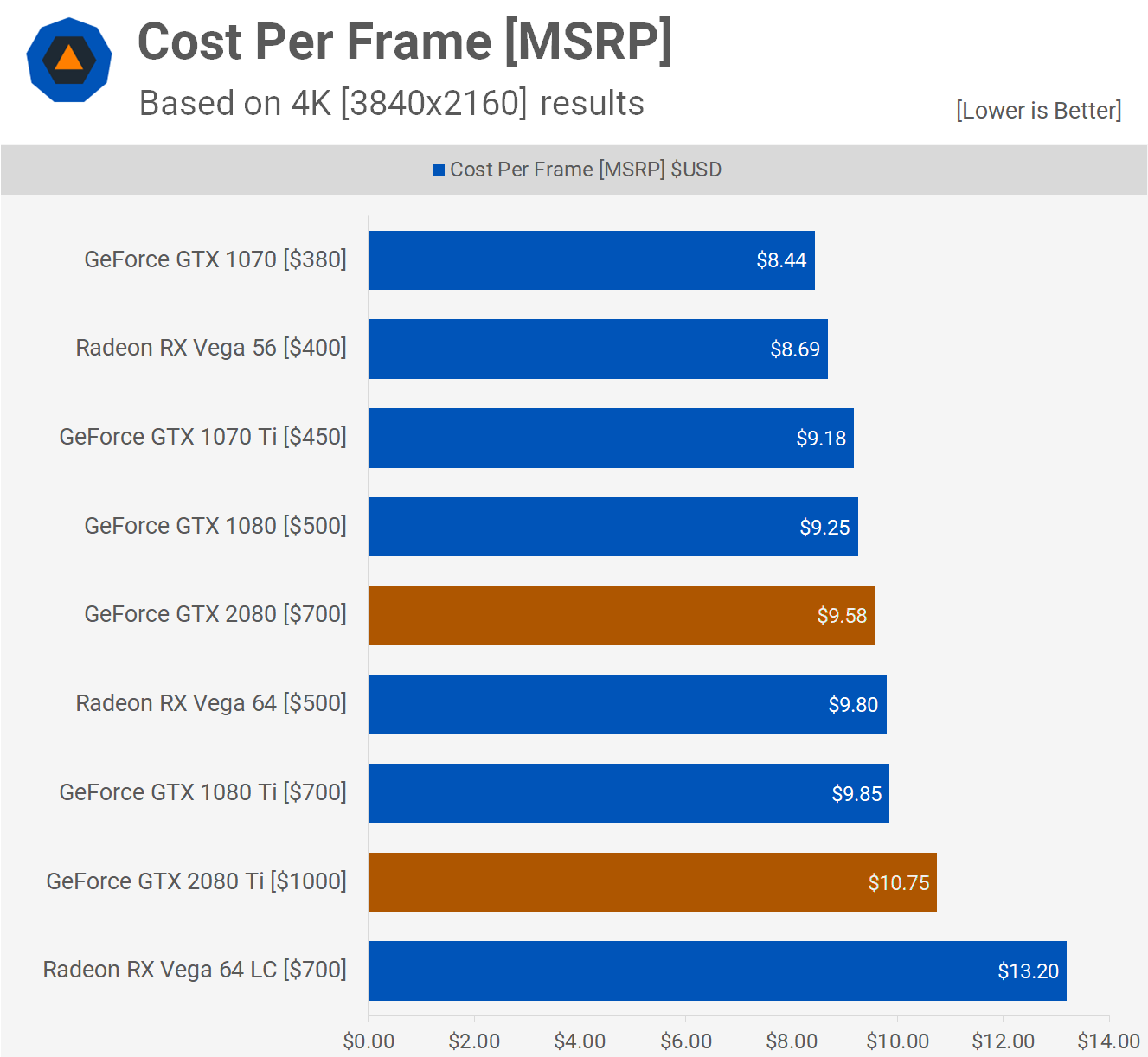
The RTX 2080 comes in at a cost of $9.58 per frame and that makes it just 4% more costly than the GTX 1080 and 3% cheaper than the GTX 1080 Ti. So that actually seems pretty good, and by all accounts it is. I mean it's not exactly great progress as you're effectively paying GTX 1080 Ti money for GTX 1080 Ti performance and we've had that for a year and a half now.
The situation gets much worse if we price in the Founders Edition models, the 2080 FE costs as much as an AIB 2080 Ti per frame and then the $1200 2080 Ti comes in at a staggering $12.90 per frame, 31% more than the 1080 Ti. But it gets even worse than that because you are forced to pay the FE premium on all GeForce 20 series cards, here's a look at current market prices.

This is what you can currently expect to pay for the RTX 2080 and 2080 Ti and it's pretty brutal. The 2080 comes in at a cost of $11.50 per frame making it worse value than Vega 64 and 20% more costly than the GTX 1080 Ti for the same performance. The 2080 Ti is basically a breakeven scenario, it's about 30% faster than the GTX 1080 Ti and it costs 35% more per frame. Of course you want to be able to use all that extra performance as it costs almost 80% more up front.
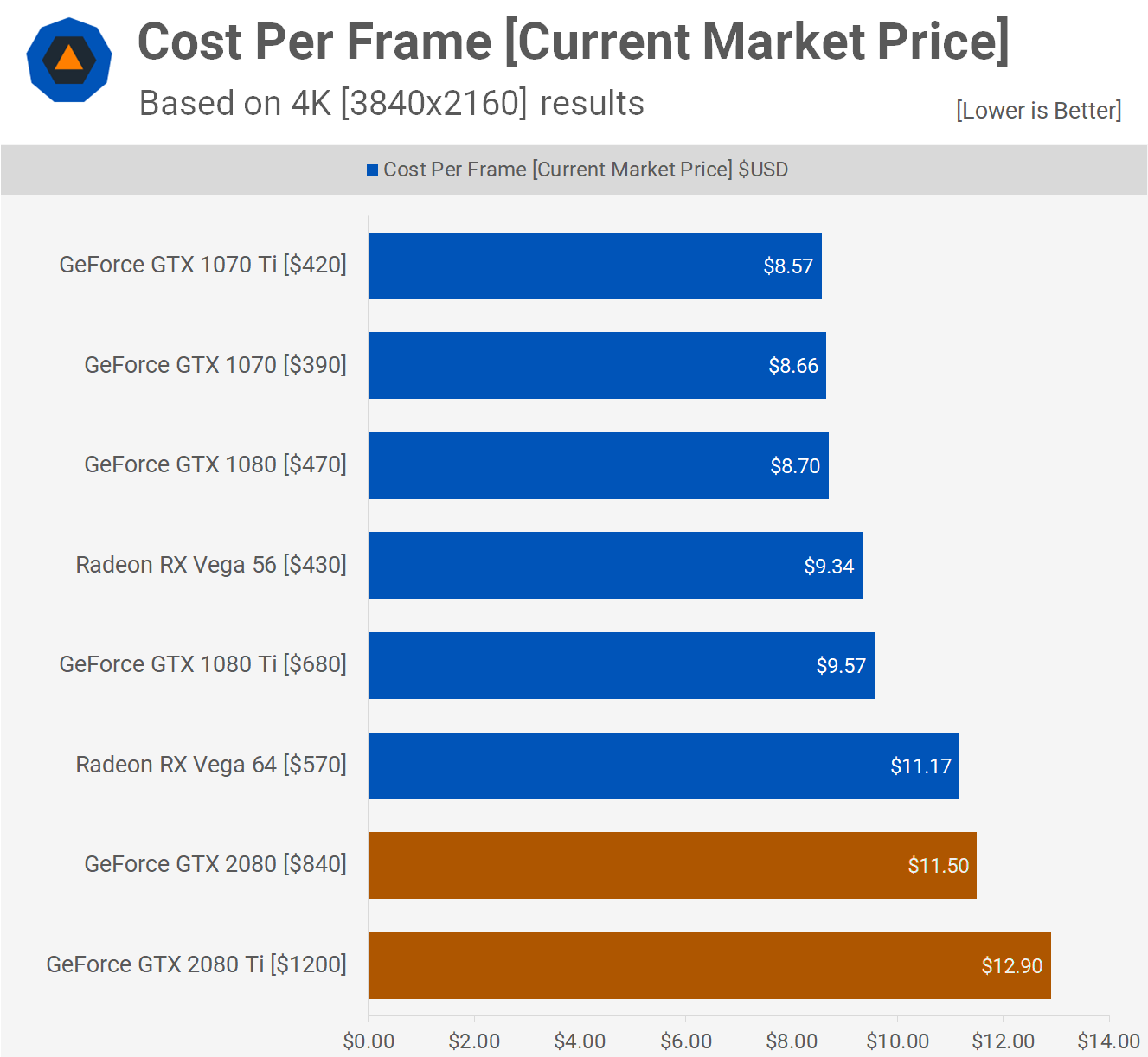
Closing Thoughts
There's meant to be something else, some other advantage to buying these new Nvidia GeForce RTX graphics cards, I just can't remember what it is... Oh, wait silly me, it's in the name, Ray Tracing. The RTX 2080 Ti packs 10 Giga Rays per second of Ray Tracing performance and right now you can utilize a total of 0 Giga Rays per second.
Considering how much noise Nvidia has made about the new tech, having they spent the vast majority of their launch event talking about it, it's pretty shocking that every gamer who ordered one after seeing the Star Wars demo, run on what was basically a super computer, can't use the technology at all.
In fact, we're waiting on a Windows 10 update, scheduled for release next month, before it's even possible to use the technology. But of course, we also need games, and frankly the list of games advertised to include Ray Tracing is pretty underwhelming. Currently the list includes less than a dozen games and they make up maybe a quarter of the hotly anticipated titles that will be released over the next year.
Also I have to assume most gamers aren't a fan of all games, so chances are there's just a couple of titles coming out over the next 12 months or so that support Ray Tracing that you'll actually want to play.

One of the best looking games is Shadow of the Tomb Raider which will add support for Ray Tracing next month at the earliest, at which point most of you who want to play that game, will have played that game, so going back and playing it again just to check out Ray Tracing makes it more of a tech demo at this point.
There's meant to be something else, some other advantage to buying these new Nvidia GeForce RTX graphics cards, I just can't remember what it is... Oh, wait silly me, it's in the name, Ray Tracing. The RTX 2080 Ti packs 10 Giga Rays per second of Ray Tracing performance and right now you can utilize a total of 0 Giga Rays per second.
So it seems as we suspected, Nvidia made a heap of noise about Ray Tracing to justify the crazy high prices of these new GPUs. It's unlikely many will want to or will be able to take advantage of Ray Tracing with the GeForce 20 series. That's just speculation on my behalf at this point, so we will have to wait and see, but already the games list is a strong indicator that I may be right on this one.
DLSS (Deep Learning Super-Sampling) is another exciting new feature that we can't yet test outside of a single game demo and while the list of supported games is more extensive, it's still rather limited. So again, this is a wait and see situation.
When it comes to our reviews, we only like to make recommendations based on the facts we have at hand, which is why we were a little hesitant initially to recommend Ryzen, as it wasn't clear how long it would be before those extra cores would prove useful for gamers. In the case of these new GeForce RTX graphics card, we can only base our assessment on the games tested and current market pricing. That being the case these new GeForce graphics cards are a tough sell, and frankly if I'd pre-ordered the RTX 2080 I'd be seriously considering canceling it.
Right now the RTX 2080 makes little sense. At the $700 AIB MSRP it's okay, I guess. Basically it's a few percentage points better than the GTX 1080 Ti and while the gains are impressive in titles such as Rainbow Six Siege and Wolfenstein II, for most titles the gains are only marginal, and we'll illustrate this better in tomorrow's 35 game benchmark feature.
So after a year and a half we're getting GTX 1080 Ti-like performance for GTX 1080 Ti money. But then, that's not even true. We're getting GTX 1080 Ti-like performance for a 20% price hike and the hope that Ray Tracing won't be a complete bust for this generation. So after a year and a half of gaming with the GTX 1080 Ti, color me rather unimpressed.
Then we have the extremely impressive RTX 2080 Ti, the sock blower. I lost so many pairs of socks benchmarking this thing in a few dozen games that I've had to restock my drawer. It's a mighty impressive GPU in terms of sheer performance, as we saw it's on average 31% faster than the already fast GTX 1080 Ti. So finally, high quality 4K single card gaming is a reality.
But it's a reality you'll need a second job to support. At the $1,000 AIB MSRP it's not too bad as crazy as that sounds, you still pay a premium, but it's less than 10% over the 1080 Ti. However at the current market pricing it's a bad joke, a 35% premium over the 1080 Ti, no thank you.
If you've got money to burn then I guess the RTX 2080 Ti can be justified, because you're not really needing to justify anything, after all 4K 144 Hz gaming monitors start at $2,000, so I guess dropping $1,200 on a graphics card to make use of it won't be an issue. For the rest of us it's just not worth touching. AMD's Vega 64 is horrible value and yet you'll be paying even more per frame for the RTX 2080 and 2080 Ti. That's probably all you need to know.
Horrible pricing aside, I'm in awe of the performance Nvidia has achieved with these new GPUs, particularly the GTX 2080 Ti, shame they had to spoil it with the price tag.
Editor's note: Also check out our day 2 follow-up mega 35 game benchmark feature.
Shopping Shortcuts:
- GeForce RTX 2080 Ti on Amazon, Newegg
- GeForce RTX 2080 on Amazon, Newegg
- GeForce GTX 1080 Ti on Amazon, Newegg
- GeForce GTX 1080 on Amazon, Newegg
- GeForce GTX 1070 on Amazon, Newegg
- GeForce GTX 1060 on Amazon, Newegg
Nvidia GeForce RTX 2080 Ti Scorecard
score
Pros: The alpha GPU. Top dollar gets you top performance that beats everything else in the market. High quality 4K single card gaming is a reality with the RTX 2080 Ti. Has the biggest chance of running ray tracing at decent frame rates (still a guessing game until actual game support arrives). DLSS is another exciting feature with a ton of potential.
Cons: Very expensive. Game support for unique ray tracing features will have to wait.
Nvidia GeForce RTX 2080 Scorecard
score
Pros: Great gaming performance with solid scores on thermals and power consumption. DLSS is an exciting feature with a ton of potential. Ready for next-gen ray tracing once game/application support arrives.
Cons: You're effectively paying GTX 1080 Ti money for GTX 1080 Ti performance, and we've had that for a year and a half now. Expensive and not great value. Ray tracing support and performance upon arrival remain a question mark.
